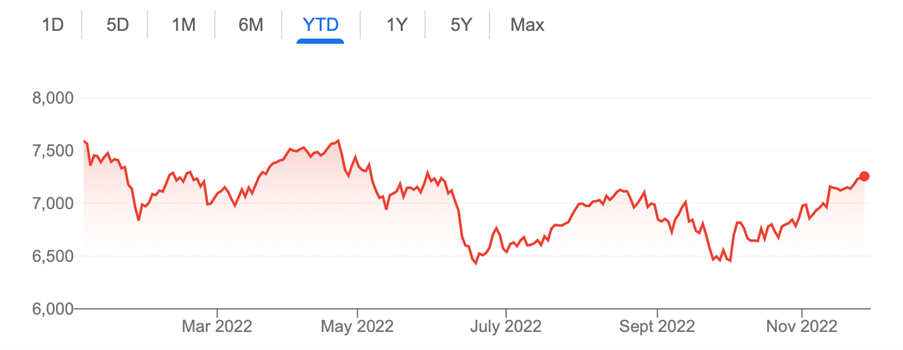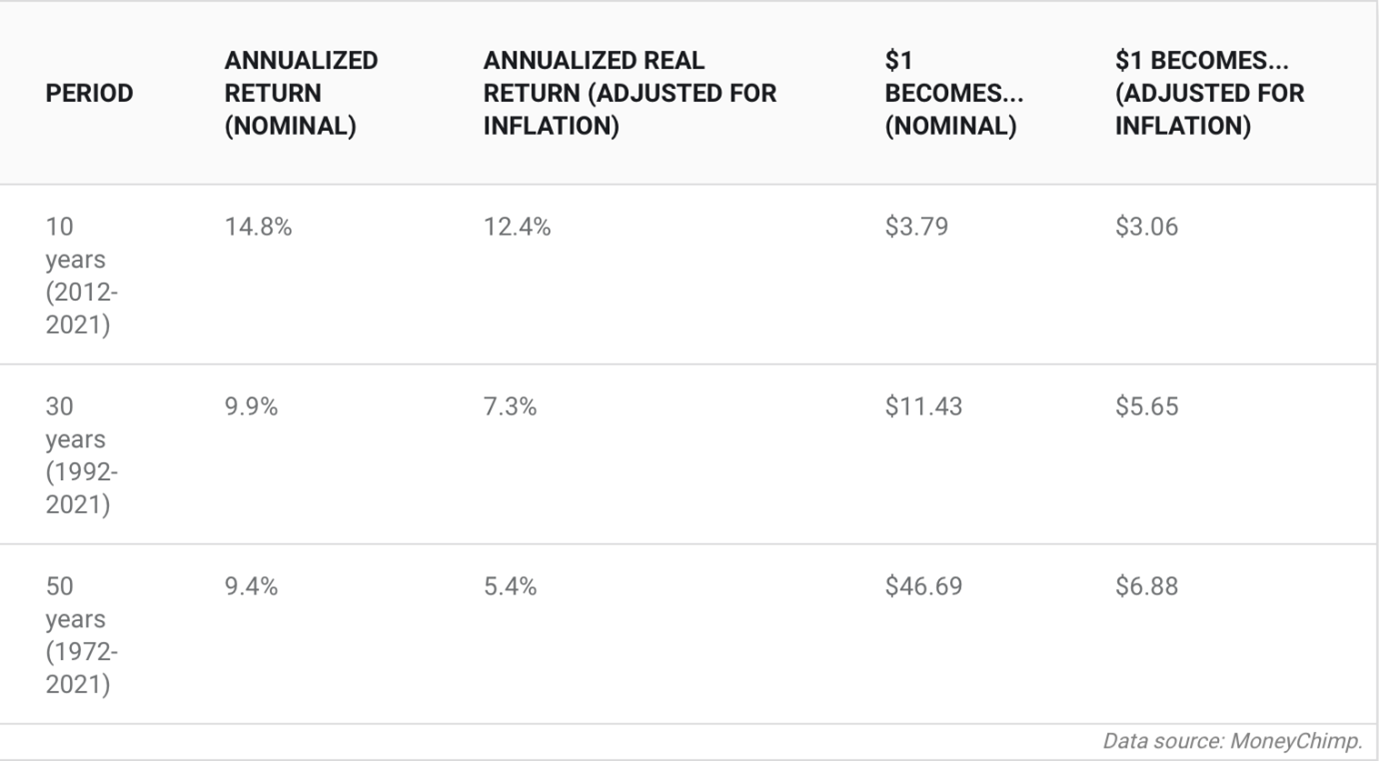Security Alert: Scam Text Messages
We’re aware that some nabtrade clients have received text messages claiming to be from [nabtrade securities], asking them to click a link to remove restrictions on their nabtrade account. Please be aware this is likely a scam. Do not click on any links in these messages. nabtrade will never ask you to click on a link via a text message to verify or unlock your account.
Peter Switzer’s “easy” 15% return in 2023
Beware the pessimists who worry about a US recession that could take stocks down again, but be aware that they could be right — in the short term.
For anyone investing now, if you’re prepared to do it for at least a year (even longer), I’ve argued that an easy 15% in one year could be made putting your money in a diversified asset, containing some of the best businesses in Australia.
I won’t keep you in suspense, because I think it’s more important to provide the proof of my claim of an “easy 15% gain”, rather than playing with the drama of holding back the investment so I can get you to read this story.
The play is an exchange traded fund for the S&P/ASX 200 index. You can access this via IOZ or STW, or you could use VAS, which will give you the top 300 listed companies on the local stock market.
But where do I get 15% from? Well, I start with a 10% rebound in stocks over 2023, which is rather small considering that 2022 was a rough year for stocks, until early October. This chart shows what has happened to the index year-to-date.
S&P/ASX 200

Source: google finance
Since October 3, the index is actually up 12.3%, so those who took this tip a month or so ago (when I suggested it was a smart play) have already got themselves placed for a nice return. This rebound came faster than I expected, but it has been driven by what I suspected would be a good driver for stock prices, that is, signs that inflation was falling and therefore US interest rate rises are closing in on their peak.
That would help Wall Street reverse the big sell-off of stocks, especially tech and growth stocks, and set us up for a good year for investing in shares over 2023. This would also coincide with the third year of a US presidency, which historically has been the best for stocks for a long time.
I’ve also been factoring in an end to China’s zero COVID policy. While right now this looks a lot less likely, I’ll gamble that over 2023 it could be done and dusted. I’d like to believe that the Ukraine war would be over, but that’s an optimistic bet not even I would make.
That said, we are seeing product inflation fall in the US. Over 2023, the impact of higher interest rates and inflation itself should help to increase unemployment, which will take the pressure off services inflation.
Provided the US dodges a severe recession, which is a bet most economists are making, then 2023 should be a rebound year for stocks, especially for the Nasdaq and tech stocks. This chart of the Nasdaq shows the sell-off that has happened in this year.
Nasdaq Composite

Source: google finance
Year-to-date, this tech-heavy index is still off 28%, meaning it’s still in a bear market, while the S&P 500 is down 16%. But it was off 25% at one stage. This recent stocks comeback hasn’t really been tech-inclusive, but I believe tech will eventually get into the act, and so does Morgan Stanley’s Chief U.S. Equity Strategist Mike Wilson.
He sees an end in sight for the US bear market but it still could be tricky/scary in the short term. “I think we’re in the final stages, but the final stages can be very challenging, right?” he told CNBC. “Now it’s more of a two-way risk. And we’re going to be in that two-way risk probably until the year-end. “The final move of the bear market probably comes next year in the first quarter, when the earnings finally catch up to where we think they’re going to be next year.”
He thinks the S&P 500 (now at 4026) could slide to a level such as 3000 to 3300 but he said that would be “a great buying opportunity.”
I think he’s being too bearish on the US index but I agree with him when he thinks 2024 will be the year US company earnings will spike. In all likelihood, there’ll be good share buying in the second-half of 2023 in anticipation of this lift in company profits.
As I said, he could be way too negative about a US market sell-off, but I like his scenario that says there should be a big bounce for stocks in the second half of 2023, ahead of a better profit-year in 2024.
Todd Castagno, Morgan Stanley’s global valuation, accounting and tax strategist, says a number of big name tech stocks look like great buys and these will help power both the Nasdaq and the S&P 500, which in turn will help our market bounce higher in 2023. This will coincide with lower inflation here and an end to interest rate rises, which will be good for the S&P/ASX 200 index.
Those big tech names that include Amazon, Alphabet, Disney, Uber and Advanced Micro Devices, carry a lot of weight in the Nasdaq and S&P 500 indexes.
So how does an ETF for the S&P/ASX 200 give me 15%? I’m predicting the index will be up 10% between now and the end of the year. Rebound years after a big sell-off tend to be significant. In 2009 after the GFC, the local index surged over 40%! After the Coronavirus crash, the rebound was 36%, so looking for 10% in 2023 isn’t a big ask.
Let’s add a conservative 4% for dividends from the likes of IOZ or STW, so with franking I get 15% plus. This doesn’t look like a big call.
Of course, there are no certainties when it comes to investing, but what happens if I’m wrong in 2023? Well, I reckon I’ll be more than right in 2024 and you’ll still get a dividend from the ETF plus franking close to 6%, while you wait for the big pay-off.
I always argue that you get about 10% a year from stocks over 10 years, where half of that comes from dividends. Motley Fool’s Mike Price has looked at the decade returns from stocks and this is what he found for the period 2012-2021:
- The average stock market return was 14.8% annually for the S&P 500.
- For one year, the market lost 4.4%.
- For one year, the market lost 2% or less.
- Four years saw 20% or more gains.
- Four years had 12-19% gains.
However, this was a very easy decade to make money.
This table shows what you should expect from stocks over a decade.

Sources: The Motley Fool, MoneyChimp
As you can see, on the law of averages, my 10% call for 2023 looks pretty good.
All prices and analysis at 28 November 2022. This information was produced by Switzer Financial Group Pty Ltd (ABN 24 112 294 649), which is an Australian Financial Services Licensee (Licence No. 286 531This material is intended to provide general advice only. It has been prepared without having regard to or taking into account any particular investor’s objectives, financial situation and/or needs. All investors should therefore consider the appropriateness of the advice, in light of their own objectives, financial situation and/or needs, before acting on the advice. This article does not reflect the views of WealthHub Securities Limited.
